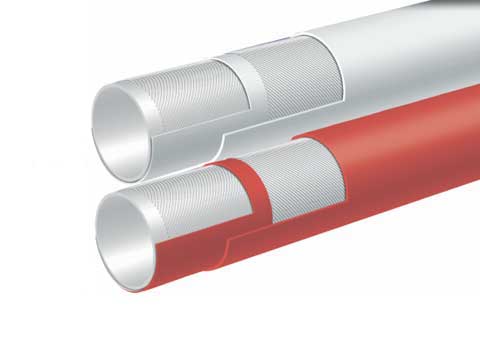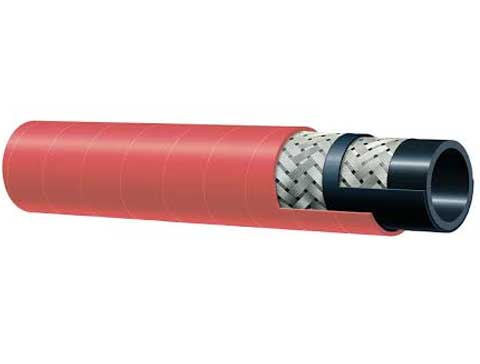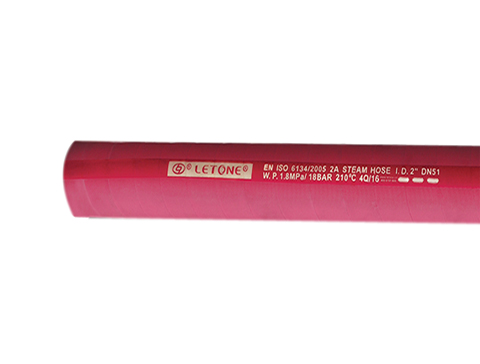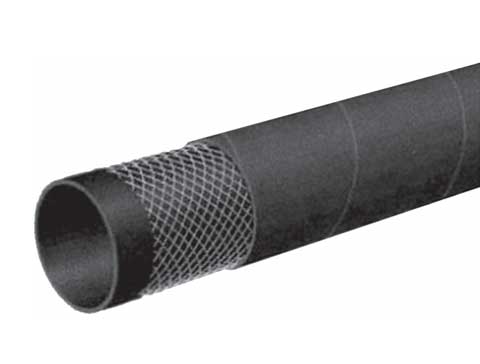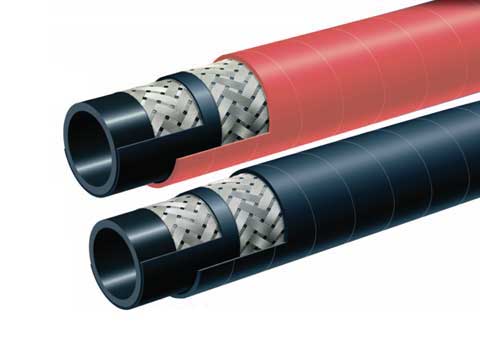The EPDM steam hose is used for transferring saturated steam in the chemical and petroleum industries. Shipyards, refineries steel mills, pulping, industrial cleaning equipment, etc.
EPDM is used to make the hose tube, which makes it durable under high temperatures and pressures. It also provides abrasion and weather resistance.
characteristics of EPDM steam hose
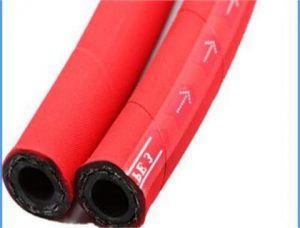
EPDM steam hose is used in a variety of industries for transporting different types of steam. These hoses can withstand high temperatures and pressure. This makes them a good choice for a range of applications, including cleaning and sterilization.
Rubber hoses made from EPDM are commonly used in the automotive industry for sealing and insulation. They are also found in parts such as radiator and heater hoses, window and door seals, O-rings, gaskets, accumulator bladders, wire and cable connectors, diaphragms, and weather stripping.
These hoses are available in many colors and can be molded into custom shapes and sizes. They can also be manufactured in a single piece, with or without a cover.
The NL2515 is an affordable steam hose that has a black tube with red Pyrosyn (high grade EPDM) rubber cover that is pin-pricked to prevent blistering. Its tube is resistant to heat, abrasion, steam ozone and weathering and its cover is oil resistant.
This hose can be used in refineries, shipyards, and plants that operate at temperatures up to 410degF. Its tube has good resistance to heat aging, and its smooth, red Pyrosyn (high grade EPDM) cover is resistant to abrasion, steam ozone, weathering and oil resistance.
This hose is reinforced with a wire braid to reduce the risk of failure when used in steam applications. It also features a 10X safety ratio.
precautions when storing EPDM steam hose
When storing EPDM Steam Hose, there are several precautions to be taken. Avoid excessive bends and never stack heavy objects on top of the hose.
Before use, it's important to inspect the hose for lumps and blisters on the cover. Also, check for kinks or slipped couplings. This will prevent a sudden hose rupture that can be dangerous to operators and cause damage to property.
The hose tube is made of high-quality black and smooth synthetic rubber, mainly EPDM, which is resistant to temperature. This makes it an effective and safe way to transfer steam.
This is reinforced by one or more layers of strong and highly tensile braided steel wire. This gives it a solid and durable structure, and allows it to perform well in high-pressure environments.
A second layer of high-quality EPDM protects the hose against abrasion and corrosion. It also protects it from weather, chemicals, high temperatures, and aging. It is also able to resist bursting and cracking.
The hose is suitable for saturated steam transfer within the chemical, petroleum, and shipbuilding industries. It can withstand pressures of up to 250 PSI and 430deg F. It also has permanent crimp couplings that are economical, safe, and secure.
medium transported by EPDM steam hose
Steam hose is used to transport saturated steam in many industries. It is typically made of a tube, a reinforcement layer and a cover. The tube is usually chlorobutyl or EPDM, while the reinforcement is a one-ply or two-ply steel wire braid, designed to resist the effects of high temperature and pressure.
The cover is an important part of a hose as it protects both the tube and reinforcer against abrasion, chemicals and environmental hazards. It is usually made of EPDM, which is resistant to weather, fire and ozone.
It is important to drain the hose after use and remove all moisture from the tube wall. This practice can prolong the hose's life and prevent "popcorning," a common problem caused by the absorption water vapor when stored at normal temperatures.
It is recommended to hang steam hose only from a rack designed specifically for this type. Never use nails or hooks. This helps to avoid kinks, sharp bends and other damage that could be done to the steel reinforcement. It also ensures that the hose won't flex while it is hanging. The hose will become weaker if it is flexed too much. It can also break away from couplings.
 EPDM steam hose is used in a variety of industries for transporting different types of steam. These hoses can withstand high temperatures and pressure. This makes them a good choice for a range of applications, including cleaning and sterilization.
Rubber hoses made from EPDM are commonly used in the automotive industry for sealing and insulation. They are also found in parts such as radiator and heater hoses, window and door seals, O-rings, gaskets, accumulator bladders, wire and cable connectors, diaphragms, and weather stripping.
These hoses are available in many colors and can be molded into custom shapes and sizes. They can also be manufactured in a single piece, with or without a cover.
The NL2515 is an affordable steam hose that has a black tube with red Pyrosyn (high grade EPDM) rubber cover that is pin-pricked to prevent blistering. Its tube is resistant to heat, abrasion, steam ozone and weathering and its cover is oil resistant.
This hose can be used in refineries, shipyards, and plants that operate at temperatures up to 410degF. Its tube has good resistance to heat aging, and its smooth, red Pyrosyn (high grade EPDM) cover is resistant to abrasion, steam ozone, weathering and oil resistance.
This hose is reinforced with a wire braid to reduce the risk of failure when used in steam applications. It also features a 10X safety ratio.
EPDM steam hose is used in a variety of industries for transporting different types of steam. These hoses can withstand high temperatures and pressure. This makes them a good choice for a range of applications, including cleaning and sterilization.
Rubber hoses made from EPDM are commonly used in the automotive industry for sealing and insulation. They are also found in parts such as radiator and heater hoses, window and door seals, O-rings, gaskets, accumulator bladders, wire and cable connectors, diaphragms, and weather stripping.
These hoses are available in many colors and can be molded into custom shapes and sizes. They can also be manufactured in a single piece, with or without a cover.
The NL2515 is an affordable steam hose that has a black tube with red Pyrosyn (high grade EPDM) rubber cover that is pin-pricked to prevent blistering. Its tube is resistant to heat, abrasion, steam ozone and weathering and its cover is oil resistant.
This hose can be used in refineries, shipyards, and plants that operate at temperatures up to 410degF. Its tube has good resistance to heat aging, and its smooth, red Pyrosyn (high grade EPDM) cover is resistant to abrasion, steam ozone, weathering and oil resistance.
This hose is reinforced with a wire braid to reduce the risk of failure when used in steam applications. It also features a 10X safety ratio.

